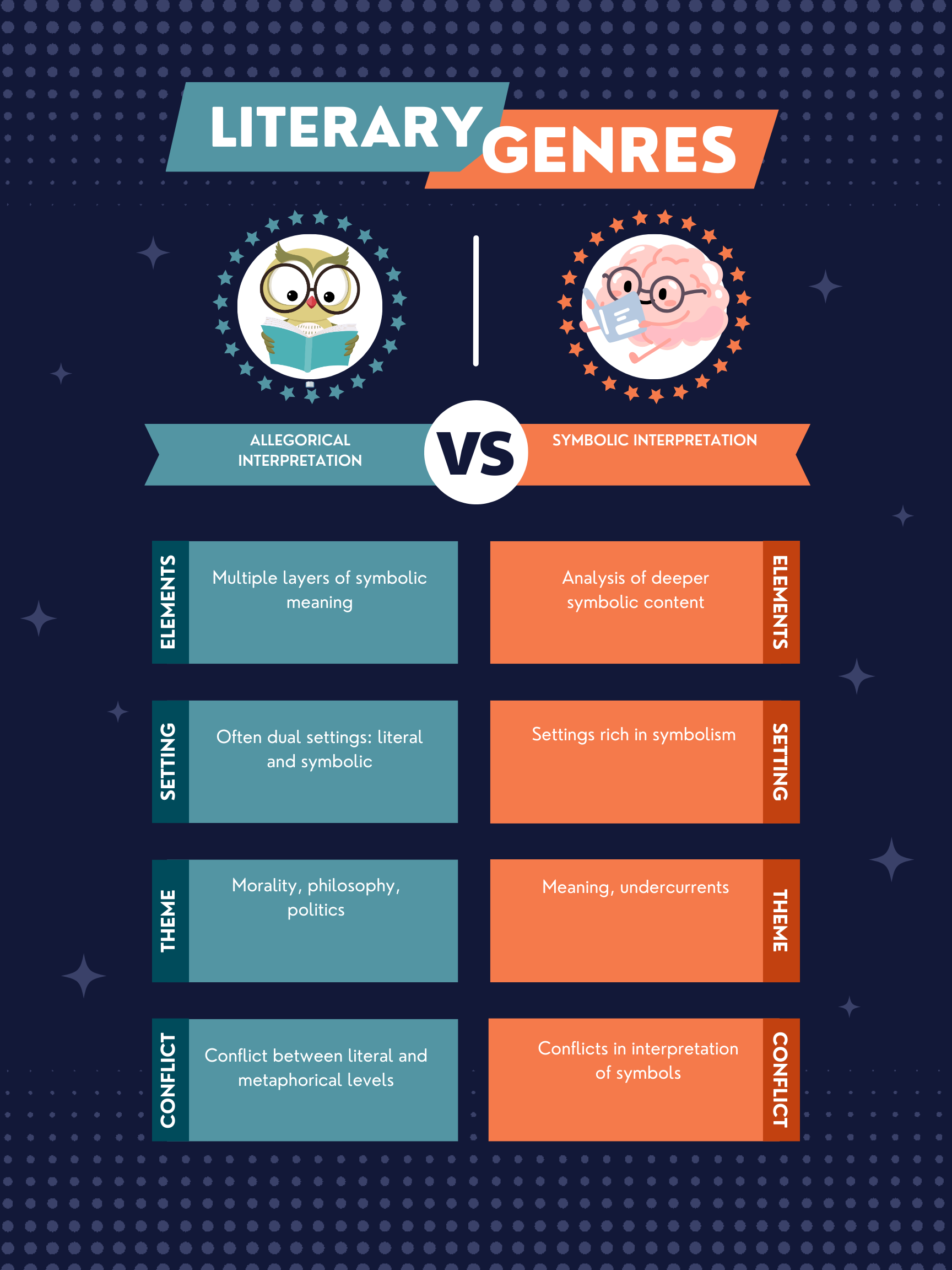Allegorical interpretation finds a deeper, often moral or political, meaning that reflects real-life scenarios; Symbolic interpretation focuses on symbols within the text to uncover deeper meanings, not necessarily tied to the real world.
Diving into allegorical and symbolic interpretations opens up layers of meaning in literature, enriching the reading experience with deeper insights. 📚🔍
Allegorical Interpretation
Allegorical interpretation involves reading a text as an allegory, where characters, events, and settings symbolize bigger ideas or concepts, often relating to moral, political, or social commentary. John Bunyan’s “The Pilgrim’s Progress” is a classic example, representing the Christian journey of faith as a physical journey through various trials and challenges.
Symbolic Interpretation
Symbolic interpretation focuses on identifying and understanding symbols within a text—objects, characters, or events that stand for larger ideas or themes but are open to multiple interpretations. F. Scott Fitzgerald’s “The Great Gatsby” uses the green light at the end of Daisy’s dock as a symbol of Gatsby’s hopes and dreams for the future, among other interpretations.
Summary
| Literary Device | Definition | Purpose | Usage | Relevant Examples |
|---|---|---|---|---|
| Allegorical Interpretation | Reads texts as allegories with characters/events symbolizing broader concepts. | To convey moral, political, or social messages through narrative. | Literature with moral or political themes. | “The Pilgrim’s Progress” by John Bunyan. |
| Symbolic Interpretation | Focuses on symbols within the text to uncover deeper meanings. | To explore complex ideas and themes through symbolic representations. | Literature that uses imagery and symbols. | “The Great Gatsby” by F. Scott Fitzgerald. |
Writing Tips
For Allegorical Interpretation:
- Understand the Context: Knowing the historical, cultural, and personal background of the author can enhance understanding of the allegory.
- Identify Core Themes: Look for recurring motifs or ideas that could represent broader concepts.
- Consider the Whole: An allegory often extends across the entire text, so consider how different elements interact to form a cohesive message.
For Symbolic Interpretation:
- Pay Attention to Detail: Symbols can be subtle; note recurring objects, words, or scenarios.
- Embrace Ambiguity: Be open to multiple interpretations of a symbol, reflecting on how each adds depth to the text.
- Connect Symbols to Themes: Consider how symbols relate to the larger themes or messages of the work.
FAQs
Can a text have both allegorical and symbolic layers?
Yes, many texts incorporate both allegorical elements, with specific characters or events representing clear concepts, and symbolic elements that invite varied interpretations.
How do I approach interpreting a text that uses both techniques?
Start by identifying clear allegorical elements based on context and themes, then explore symbolic meanings that may offer personal or less universal interpretations.
Exercise
Read the following excerpt: “In the kingdom of shadows, the sun never rose, and the citizens learned to find their way by the stars.”
Answer: This passage could be allegorically interpreted as a commentary on navigating through dark times with hope (stars), while symbolically, the stars could represent various guiding principles or beliefs in life.
Other Interesting Literary Device Comparisons
- Metaphor vs. Metonymy: While a metaphor makes comparisons by stating something is something else, metonymy refers to something closely associated with it (e.g., “The White House” for the U.S. President).
- Irony vs. Sarcasm: Irony involves a contrast between expectations and reality, while sarcasm is often irony used with the intent to mock.
- Paradox vs. Oxymoron: A paradox is a seemingly contradictory statement that may reveal a truth, while an oxymoron combines two contradictory terms for effect.
Exploring allegorical and symbolic interpretations enriches our engagement with literature, revealing the depth and diversity of meanings that texts can convey.

